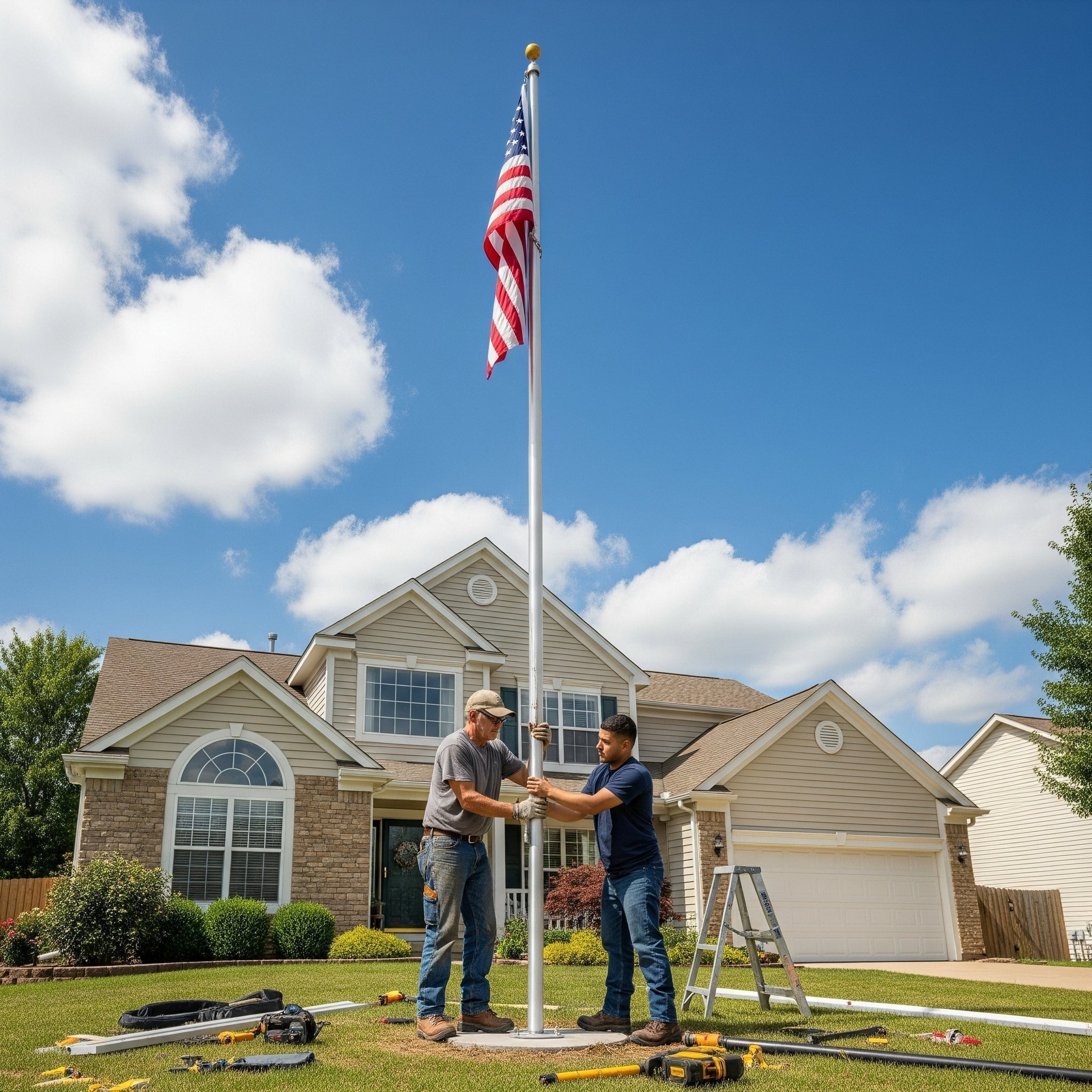
· By Drew Whitmore
Top Mistakes to Avoid When Installing a Flagpole
Common Flagpole Installation Mistakes and How to Avoid Them
Installing a flagpole is a significant project — far more than simply embedding a pole in the ground. It's about creating a long-lasting, respectful, and secure way to fly the American flag with pride.
Whether you're installing your first flagpole or replacing an old one, understanding what pitfalls to avoid is just as crucial as following correct procedures. Here are the most common mistakes homeowners make — and how to avoid them.
1. Skipping the Utility Check
One of the most dangerous mistakes is digging without calling 811.
This free service helps mark underground utilities like gas, electric, water, and cable lines.
Ignoring this step can lead to injury, fines, and costly damage. Always call first, even if you think you know what’s below.
If you're new to the process, review our guide on what to know before digging for a flagpole installation.
2. Choosing the Wrong Location
A poorly chosen site can affect visibility, safety, and flag performance.
Avoid areas with overhead power lines, tree branches, or unlevel ground. Also think about how the flag will look from the street or house.
If space is limited, consider installing a flagpole on a deck or balcony.
3. Using the Wrong Depth or Foundation
Setting a flagpole too shallow can lead to leaning or collapse.
The standard guideline is to dig a hole that’s 10% of the pole height + 2 feet. For a 20ft pole, that means 4 feet deep.
Include gravel for drainage and concrete for stability.
Learn more in our guide on how deep a flagpole should be in the ground.

4. Forgetting to Ground the Pole
Grounding protects your flagpole from lightning strikes — especially in open yards or storm-prone areas.
Use an 8ft copper rod, #6 copper wire, and outdoor-rated clamps.
Get step-by-step help from our article on how to ground a flagpole for lightning safety.
5. Choosing the Wrong Flag Size
A flag that’s too large can damage your pole; too small will look underwhelming.
For a 20ft pole, a 3x5 ft or 4x6 ft flag is typically appropriate.
Check our sizing guides: what size flag is right for a 20ft pole and what flag size works best for a 25ft pole.
6. Ignoring Weather Conditions
If you live in a windy or coastal area, select a flagpole with an appropriate wind rating.
Learn whether it’s safe to fly the flag in bad weather, and consider a telescoping pole for easy lowering.
Here’s how to lower and raise a telescoping flagpole.
7. Neglecting Proper Lighting
The U.S. Flag Code requires proper illumination when flying your flag at night.
Use a solar light with sufficient brightness and battery life.
Review the best solar flagpole light and top flagpole lights for 2025.
Also check whether it’s legal to fly a flag at night without a light based on your HOA or state.

8. Overlooking Material and Maintenance
Choosing the wrong pole material or skipping maintenance shortens your flagpole’s life.
Aluminum is strong, rust-resistant, and ideal for most climates.
Inspect halyards, clips, and foundations yearly. Keep the pole clean and lower the flag in severe storms.
For long-lasting performance, consider our 24ft aluminum flagpole kit.
9. Not Planning for Retirement and Care
A worn-out flag should never stay up. Torn or faded flags deserve proper retirement.
Remove your flag in high winds, keep it clean, and replace it as needed.
Learn how to retire your flag respectfully when the time comes.
Related Posts
